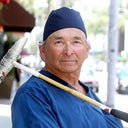Posted underAsian Rhinoplasty q&a
What is the Safest Material for Asian Nose Bridge Augmentation? (Rhinoplasty)
I've heard of Goretex, Silicone, and cartilidge for augmentation of an asian nose bridge. What are the respective costs of each material and in your opinion the safety/effectiveness in the short and long term of these materials. mostly I would like permanency and a low risk of infection. For a very flat nose bridge that needs a significant augmentation, which material sounds good?
Answers (35)
From board-certified doctors and trusted medical professionals
Dr. Charles S. Lee, MD, FACS

Dr. Charles S. Lee, MD, FACS
Board Certified Plastic Surgeon
Answer
Dr. Jimmy C. Sung, MD

Dr. Jimmy C. Sung, MD
Board Certified Plastic Surgeon
Answer
Dr. Donald B. Yoo, MD, FACS

Dr. Donald B. Yoo, MD, FACS
Board Certified Facial Plastic Surgeon
Answer
Dr. Evan Ransom, MD, FACS

Dr. Evan Ransom, MD, FACS
Board Certified Facial Plastic Surgeon
Answer
Dr. Paul S. Nassif, MD

Dr. Paul S. Nassif, MD
Board Certified Facial Plastic Surgeon
Answer
Dr. Thomas A. Lamperti, MD

Dr. Thomas A. Lamperti, MD
Board Certified Facial Plastic Surgeon
Answer
Dr. Houtan Chaboki, MD

Dr. Houtan Chaboki, MD
Board Certified Facial Plastic Surgeon
Answer
Dr. Toby Mayer, MD

Dr. Toby Mayer, MD
Board Certified Facial Plastic Surgeon
Answer
Dr. Stephen Prendiville, MD

Dr. Stephen Prendiville, MD
Board Certified Facial Plastic Surgeon
Answer
More Asian Rhinoplasty Questions
See all Asian Rhinoplasty Q&AWE SEND PRETTY
EMAILS
What’s trending? Who’s turning heads? Which TikTok myths need busting? We’ve got you. No fluff, no gatekeeping—just real talk. Get our free, unfiltered newsletter.
